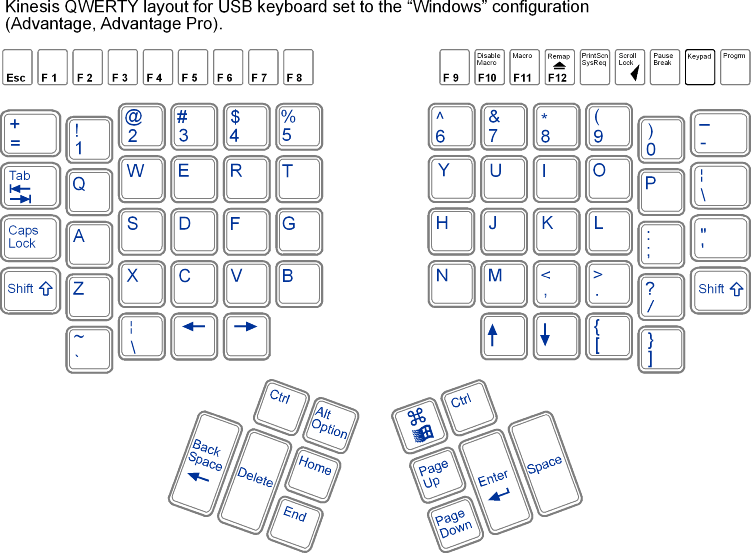10
I'm using the United States International keyboard layout, so pressing ' and then o should make an accented ó in Microsoft Windows 10.
The problem is that I'm using a Kinesis Advantage keyboard and it doesn't have an Alt Gr and it doesn't have a numerical keypad.
Any ideas if there's a way to type the pound sign (£) on this keyboard?
This is the layout:

2@JakeGould: ctrl-alt-shift-$ did it: £. Do you want to add it as an answer? – pupeno – 2018-08-28T16:31:58.790
2Answer added! Happy to help! If you found my answer helpful, please be sure to upvote it. And if it is the answer that ultimately is the answer, please be sure to check it off as such. – JakeGould – 2018-08-28T16:49:07.763
1
On Windows
– phuclv – 2018-08-28T17:09:16.310AltGris equivalent toCtrl+Alt1@phuclv - ...as I said in my answer here below... – Jeff Zeitlin – 2018-08-28T17:30:21.333
@pupeno Jeff deserves the answer. Mine is just lucky guessing. – JakeGould – 2018-08-28T17:33:25.130